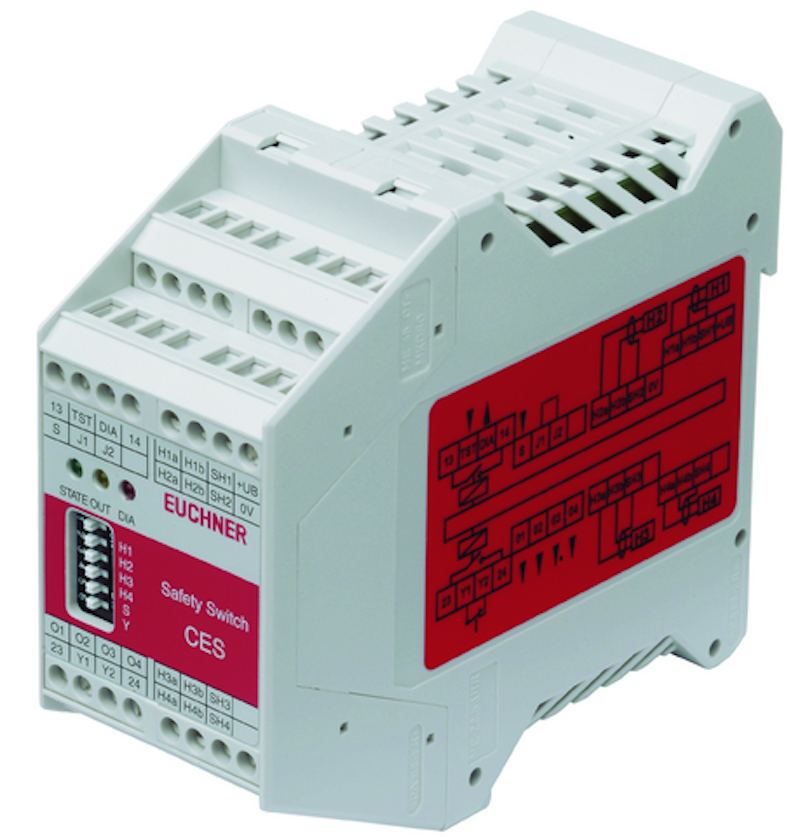In a modern factory, where robots work alongside humans and massive conveyor systems operate at high speeds, safety is paramount.
But have you ever stopped to consider how all these machines know when to stop? More often than not, the unsung hero behind this seamless operation is a humble device known as a safety relay.
Imagine this: a worker inadvertently opens a safety gate while a machine is running. In that split second, a safety relay detects the breach and cuts the power, preventing potential harm.
This process plays out thousands of times a day in factories worldwide, without anyone noticing, because no accidents occurred.
What Exactly Does a Safety Relay Do?
At its core, a safety relay is designed to monitor and control safety functions in industrial settings.
It isn’t just a simple on/off switch. It’s a sophisticated device that manages multiple safety circuits simultaneously, monitors its own performance, and ensures that everything runs smoothly.
Safety relays have built-in redundancy, meaning they have dual inputs and outputs to safeguard against failure. If something goes wrong within the system, the relay will default to a safe state rather than allowing a potentially dangerous malfunction.
Their job is to make sure that if anything goes wrong – whether a malfunction or human error – it triggers a safe shutdown.
More Than Just a Switch: The Technical Edge
Modern safety relays are much more than simple fail-safes. They have internal logic and monitoring features that ensure the system is always functioning correctly. They constantly perform diagnostic checks on themselves, verifying everything from coil faults to the integrity of their contacts.
What makes them so effective is their ability to detect discrepancies. For example, they check for any faults or short circuits between channels, ensuring that no single fault can jeopardise the safety of the system.
Additionally, some safety relays are capable of performing advanced functions like detecting a guard door being opened and locking down power to prevent any accidental operation.
But it’s not just machinery that safety relays protect – they protect people, too. As humans, we can be unpredictable. People forget procedures, make mistakes, or become distracted.
That’s why a safety relay ensures that even in those moments of lapse, the system still behaves safely. They enforce “forced guidance,” a design feature that makes it impossible to bypass safety protocols accidentally.
Redundancy and Reliability: The Backbone of Safety
A key feature of safety relays is their redundancy. The devices are built with multiple safety channels, meaning that even if one channel fails, the other is there to take over.
This redundancy is a critical part of ensuring that even if something goes wrong within the relay, the system will still default to the safest possible state.
Modern relays also have the ability to monitor and communicate with other safety devices in the system. This communication helps to ensure that every device – from the safety gates to the machines themselves – is operating correctly.
It also allows for advanced diagnostics, meaning that operators can quickly spot any faults in the system before they turn into bigger issues.
When to Use a Safety Relay vs. a Safety PLC
While safety relays are a fantastic solution for many applications, there are situations where a Safety PLC might be a better choice. The difference lies in the complexity of the system.
Safety relays are ideal for simpler, smaller applications with fewer safety functions. For example, if you have a couple of E-Stops and guard doors on a single machine, a safety relay will do the job effectively and economically.
They’re easy to wire, cost-effective, and quick to implement. They are also perfect for retrofitting existing equipment with safety features.
On the other hand, a Safety PLC offers a much higher degree of flexibility and is better suited for complex, interconnected systems. These systems are typically used in large, automated facilities where multiple machines and devices need to communicate and work together.
Safety PLCs offer the ability to integrate advanced diagnostics, control multiple safety zones, and handle complex logic.
The Importance of Preventative Safety
Accidents in the workplace come with a hefty price tag – from medical bills to insurance claims, production downtime, and potential lawsuits. Safety relays provide an economic solution by preventing accidents before they happen, ultimately saving money.
They are cost-effective insurance that can keep businesses running smoothly by mitigating the risks that come with industrial operations.
But the savings aren’t just financial. The peace of mind that comes with knowing your systems are secure is invaluable. When managers know that their safety systems are reliable, they can focus on improving productivity and efficiency without worrying about catastrophic failures.
A Glimpse into the Future
As factories become more connected and data-driven, safety relays are evolving. Newer models are incorporating more advanced diagnostic capabilities, predictive maintenance features, and greater integration with plant-wide management systems.
Despite these advances, safety relays continue to do what they’ve always done best: keeping people safe while allowing industry to move forward.
In conclusion, the next time you see a product that’s been manufactured in a modern facility, remember that behind the scenes, a safety relay has been quietly standing guard, ensuring that everyone goes home safely at the end of the day.
It might not get the spotlight, but it’s essential to keeping the industry running smoothly.

